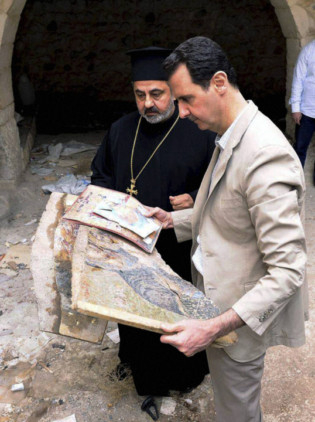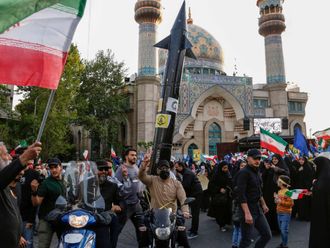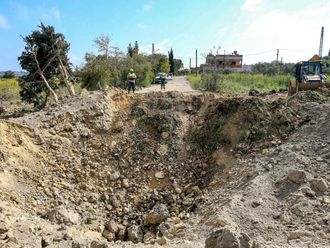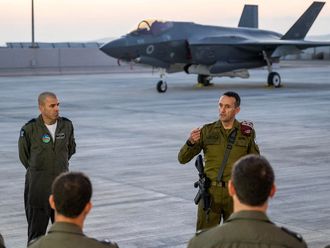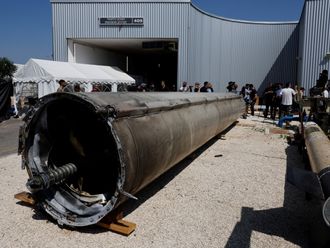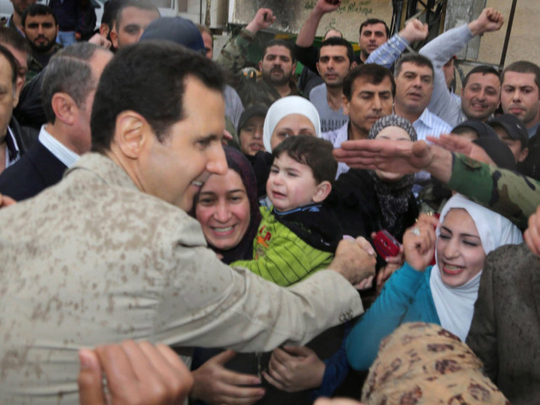
Maaloula, Syria: Syrian President Bashar Al Assad on Sunday visited an ancient Christian town recaptured from rebels last week, state media said, as he seeks to persuade minorities that the government is their best protection against hardline Islamists.
Assad’s Easter visit to Maaloula — a rare appearance outside central Damascus — also highlighted growing government confidence in recent gains against insurgents around the capital and along the Lebanese border.
Islamist fighters, including some from the Al Qaida-linked Al Nusra Front, had taken over part of Maaloula in December and held several nuns captive until releasing them in March in a prisoner-exchange deal.
On Monday, government forces retook the town, which is roughly 60km north of Damascus and has changed hands multiple times, the latest in a series of advances against rebels in the Qalamoun mountains region.
During his visit, Al Assad inspected Mar Sarkis — a Greek Orthodox monastery dating to the fourth century — and damage caused “at the hands of terrorists,” state news agency Sana said, using the government’s customary term for the rebels.
The agency said he also visited the Mar Thecla monastery, which also suffered damage during fighting for the town.
Images published by Sana showed Al Assad, dressed in a beige blazer, waving and examining antiquities as he toured the area with church officials.
A Reuters reporter in Maaloula on a state-organised tour said Syrian soldiers and members of the loyalist National Defence Force militia were stationed throughout the town, where homes and buildings were burnt and damaged by the fighting.
“The display of hatred was clear — the houses are totally destroyed, the whole village was destroyed. I can’t describe the amount of damage to the village,” said Lorain, a Maaloula resident in her 20s who was returning on Sunday after fleeing the fighting several months ago.
Rita, another resident, said she hoped to return to live in the village but that electricity and water were not ready yet.
“Still, we’re happy — and we’ll be even happier when those who are being held captive are released,” she said, referring to residents who are still missing.
Maaloula’s churches and monasteries attracted both Christian and Muslim pilgrims before the conflict. Some of its inhabitants still speak Aramaic, the language of Prophet Jesus, and the monastery of Mar Thecla has a reputation among believers for miraculous cures.
Syrian Tourism Minister Bishr Yazigi said that damage and theft to antiquities during the fighting amounted to “billions of Syrian pounds” in losses.
Al Assad’s government has consistently tried to portray itself as the protector of the country’s minorities, including the Christians who account for about 10 per cent of the population.
Meanwhile, the international watchdog charged with overseeing the destruction of Syria’s chemical weapons said Sunday that 80 per cent of the country’s stockpile has now been shipped out or destroyed.
“This development will contribute to meeting the 30 June 2014 target set by the OPCW Executive Council for the completion of Syria’s entire chemical weapon programme,” a statement from the Organisation for the Prohibition of Chemical Weapons said.


